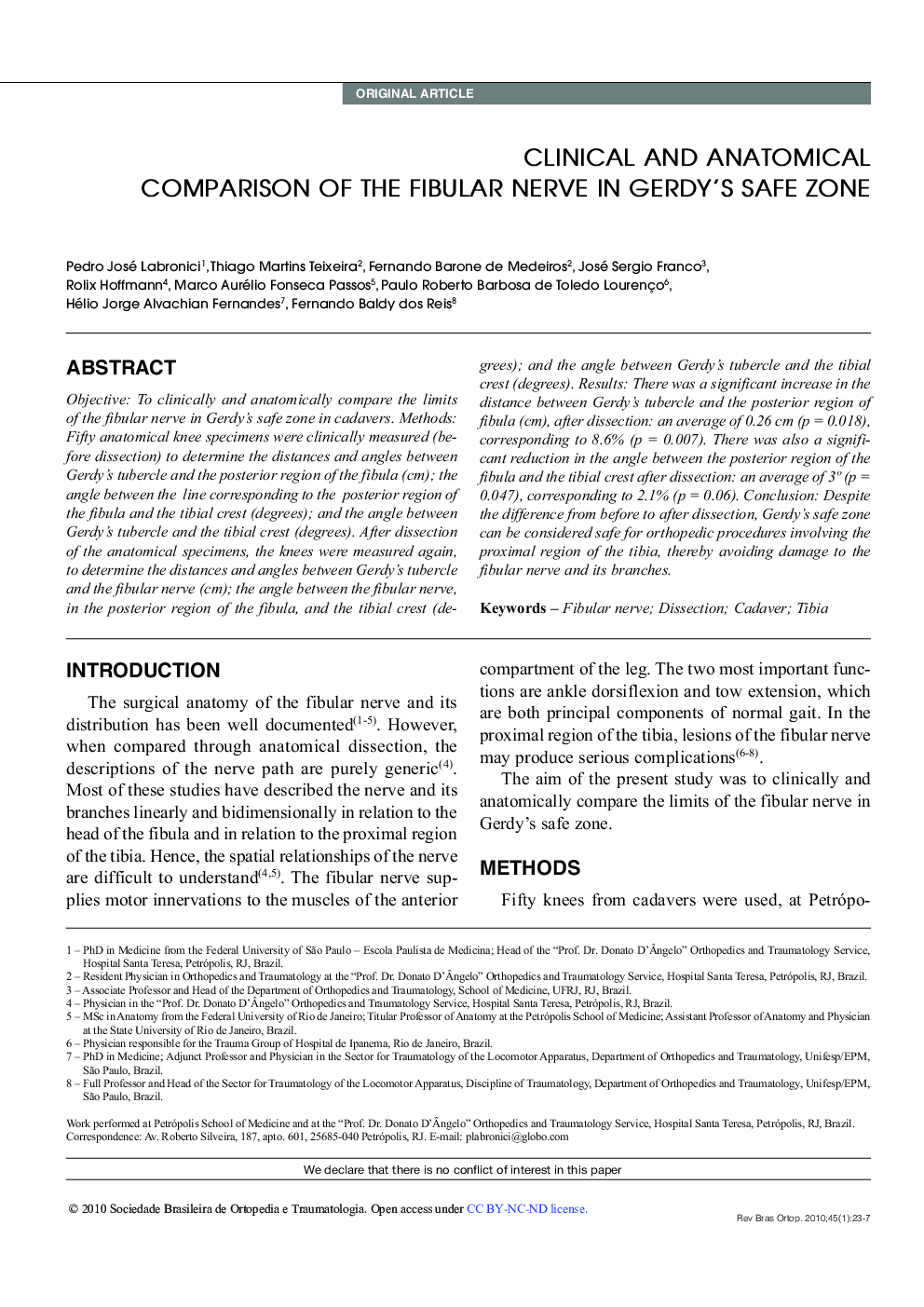| Article ID | Journal | Published Year | Pages | File Type |
|---|---|---|---|---|
| 2713911 | Revista Brasileira de Ortopedia (English Edition) | 2010 | 5 Pages |
ABSTRACTObjective: To clinically and anatomically compare the limits of the fibular nerve in Gerdy's safe zone in cadavers. Methods: Fifty anatomical knee specimens were clinically measured (before dissection) to determine the distances and angles between Gerdy's tubercle and the posterior region of the fibula (cm); the angle between the line corresponding to the posterior region of the fibula and the tibial crest (degrees); and the angle between Gerdy's tubercle and the tibial crest (degrees). After dissection of the anatomical specimens, the knees were measured again, to determine the distances and angles between Gerdy's tubercle and the fibular nerve (cm); the angle between the fibular nerve, in the posterior region of the fibula, and the tibial crest (degrees); and the angle between Gerdy's tubercle and the tibial crest (degrees). Results: There was a significant increase in the distance between Gerdy's tubercle and the posterior region of fibula (cm), after dissection: an average of 0.26 cm (p = 0.018), corresponding to 8.6% (p = 0.007). There was also a significant reduction in the angle between the posterior region of the fibula and the tibial crest after dissection: an average of 3° (p = 0.047), corresponding to 2.1% (p = 0.06). Conclusion: Despite the difference from before to after dissection, Gerdy's safe zone can be considered safe for orthopedic procedures involving the proximal region of the tibia, thereby avoiding damage to the fibular nerve and its branches.
